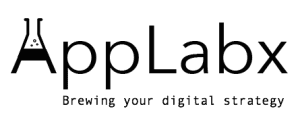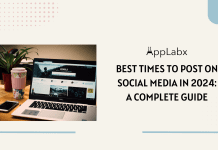Key Takeaways
- AI-driven SEO & local optimization are essential for ranking in NYC’s competitive market in 2025.
- On-page, technical, and mobile SEO strategies must align with Google’s evolving algorithms.
- Tracking key SEO metrics and adapting to search trends will ensure long-term digital success.
Search Engine Optimization (SEO) has become a fundamental pillar of digital marketing, shaping how businesses attract, engage, and convert online audiences.
As one of the most competitive markets in the world, New York presents unique SEO challenges and opportunities for businesses looking to stand out.
In 2025, SEO is evolving at an unprecedented pace, driven by advancements in artificial intelligence, search engine algorithms, and user behavior shifts.
Understanding these changes and adapting to them is crucial for businesses, entrepreneurs, and marketers aiming to maintain a strong online presence.

The Growing Importance of SEO in New York
New York is home to millions of businesses, from small startups and local service providers to multinational corporations.
With such a dense and competitive marketplace, ranking on search engines like Google is more critical than ever. Consumers in New York rely heavily on online searches to find local businesses, restaurants, retail stores, healthcare services, and professional solutions.
Whether it’s a resident looking for the best coffee shop near Times Square or a tourist searching for hotel accommodations in Manhattan, SEO plays a vital role in driving traffic and conversions.
Beyond traditional website optimization, businesses must embrace the latest SEO strategies to remain relevant.
Google’s algorithms continue to prioritize user experience, mobile-friendliness, content relevance, and authority. In 2025, simply having a website is not enough—businesses must optimize their digital footprint across multiple platforms, including search engines, social media, and local business directories.
How SEO is Evolving in 2025
SEO is no longer just about keyword stuffing or link building; it has transformed into a sophisticated, data-driven approach that requires an in-depth understanding of search engine behavior. The following key trends are shaping SEO strategies in 2025:
1. AI-Driven Search Algorithms
Google and other search engines are leveraging artificial intelligence (AI) and machine learning to deliver highly personalized and accurate search results. Technologies like Google’s Multitask Unified Model (MUM) and BERT are refining how search engines interpret user intent, making it imperative for businesses to create content that truly answers search queries in a meaningful way.
2. Voice Search and Conversational AI
With the increasing use of voice assistants like Google Assistant, Siri, and Alexa, more users are conducting searches using natural, conversational language. SEO strategies in 2025 must focus on optimizing for voice search queries, which tend to be longer and more question-based compared to traditional text searches.
3. The Growing Significance of E-E-A-T
Google’s E-E-A-T framework (Experience, Expertise, Authoritativeness, and Trustworthiness) has become a crucial ranking factor. Businesses must prioritize high-quality content, showcase industry expertise, and establish trust signals such as authoritative backlinks, positive customer reviews, and transparent business information.
4. Mobile-First Indexing and Core Web Vitals
Google continues to emphasize mobile-first indexing, meaning websites that are not mobile-friendly will struggle to rank well. Additionally, Core Web Vitals—focusing on page speed, visual stability, and interactivity—are essential for ensuring a smooth user experience and better search rankings.
5. Local SEO and Hyper-Targeted Optimization
For businesses operating in New York, local SEO is more important than ever. Google My Business (GMB) optimization, location-specific keywords, local citations, and customer reviews all contribute to better visibility in local search results. As competition grows, businesses must adopt hyper-local strategies to target specific neighborhoods and boroughs within New York City.
Why Businesses in New York Need a Strong SEO Strategy
New York’s fast-paced business environment demands a digital marketing approach that keeps up with changing trends. The city’s diverse population, high consumer expectations, and dense marketplace mean that businesses must leverage SEO to gain a competitive edge. A strong SEO strategy helps businesses:
- Increase online visibility: Rank higher on Google and other search engines to attract more potential customers.
- Drive organic traffic: Generate consistent website traffic without relying solely on paid advertising.
- Enhance brand credibility: Higher search rankings often equate to greater trust and authority in the eyes of consumers.
- Improve user experience: Optimizing for SEO also means creating a seamless browsing experience for visitors.
- Boost local foot traffic: A well-optimized local SEO strategy can drive more customers to physical stores and service locations.
In a city as competitive as New York, businesses that fail to prioritize SEO risk losing visibility, customers, and revenue to more digitally savvy competitors. Whether you are a small business owner, an e-commerce entrepreneur, or a large corporation, understanding and implementing SEO best practices in 2025 is crucial for long-term success.
What to Expect in This Guide
This comprehensive guide to SEO in New York will explore the latest strategies, best practices, and industry insights for optimizing your online presence. We will cover essential topics such as:
- The fundamentals of SEO and key trends shaping search engine rankings in 2025.
- Effective local SEO strategies to dominate the New York market.
- On-page and technical SEO techniques to improve website performance.
- The importance of link building and how to earn high-quality backlinks.
- SEO strategies tailored for e-commerce and small businesses.
- How to track SEO performance and use data-driven insights to refine your strategy.
- Predictions for the future of SEO and how businesses can stay ahead.
By the end of this guide, you will have a deep understanding of the most effective SEO tactics for 2025 and how to apply them to your business in New York. Whether you are a beginner looking to learn the basics or an experienced marketer seeking advanced insights, this guide will provide valuable takeaways to help you navigate the ever-changing world of SEO.
Let’s dive in and explore the future of SEO in New York in 2025.
A Complete Guide to SEO in New York, USA in 2025
- Understanding SEO in 2025
- Local SEO Strategies for Businesses in New York
- On-Page and Technical SEO Best Practices
- Link Building Strategies for New York Businesses
- SEO for E-Commerce and Small Businesses in NYC
- Measuring SEO Success & Key Metrics
- Future of SEO in New York & Final Thoughts
1. Understanding SEO in 2025
Search Engine Optimization (SEO) in New York is evolving rapidly as businesses compete for digital visibility in one of the most dynamic and competitive markets in the world. With constant advancements in search engine algorithms, artificial intelligence, and user behavior, understanding SEO in 2025 is crucial for businesses that want to maintain a strong online presence.
New York businesses, whether small local shops or large enterprises, must stay ahead by adopting modern SEO techniques that align with Google’s latest updates and user expectations. Below, we explore the key aspects of SEO in 2025 and how businesses can leverage them for maximum success.
What is SEO and Why Does It Matter?
Definition of SEO
- SEO (Search Engine Optimization) is the practice of optimizing websites and digital content to rank higher on search engine results pages (SERPs).
- It involves multiple strategies, including keyword optimization, technical enhancements, high-quality content, and link-building, to improve online visibility.
Why SEO is Crucial for Businesses in New York
- High Competition: New York is home to millions of businesses, making it one of the most competitive markets in the U.S. Without SEO, businesses struggle to gain online visibility.
- Local Consumer Behavior: Over 80% of consumers in New York search online before visiting a store or making a purchase. Businesses that rank higher in search results get more foot traffic and online conversions.
- Mobile-First World: The majority of searches in New York are conducted on mobile devices, making mobile optimization and local SEO critical for business success.
Example: A local bakery in Brooklyn that optimizes for “best cupcakes in Brooklyn” with location-specific keywords, Google My Business (GMB) optimization, and mobile-friendly content will likely attract more local customers than competitors that ignore SEO.
Key SEO Trends in 2025
SEO is constantly evolving, and 2025 brings new trends that businesses must adapt to in order to succeed. Below are the major SEO trends shaping search results in New York this year.
1. AI-Driven Search Algorithms
- Search engines like Google use AI-driven algorithms to improve search accuracy and understand user intent better.
- Google’s Multitask Unified Model (MUM) can analyze text, images, videos, and other content types to deliver more relevant results.
- Impact on SEO: Businesses must focus on high-quality, relevant content that addresses user queries comprehensively.
Example: If a real estate agency in Manhattan wants to rank higher, it should create in-depth content about “How to Buy an Apartment in NYC” using text, infographics, and video content to align with MUM’s AI processing.
2. Voice Search & Conversational SEO
- With the growing use of voice assistants (Google Assistant, Alexa, Siri), more people conduct searches using natural, conversational language.
- Long-tail keywords and question-based searches are becoming more relevant.
- Optimization Strategies:
- Use FAQ sections on web pages with natural-sounding questions and answers.
- Optimize for local voice searches (e.g., “Where can I find a vegan restaurant in SoHo?”).
Example: A lawyer in New York should optimize for voice search queries like “Who is the best personal injury lawyer in NYC?” instead of short-tail keywords like “NYC lawyer.”
3. The Rise of E-E-A-T (Experience, Expertise, Authoritativeness, Trustworthiness)
- Google prioritizes content that demonstrates real expertise and credibility.
- Businesses must establish themselves as authorities in their field.
- Key Ways to Improve E-E-A-T:
- Publish expert-driven content (e.g., medical advice from licensed doctors, financial tips from certified professionals).
- Include author bios, credentials, and trust signals (e.g., awards, certifications, backlinks from reputable sites).
- Encourage positive reviews and manage online reputation.
Example: A finance blog in NYC should feature certified financial planners writing content instead of general content writers to rank better under E-E-A-T guidelines.
4. Core Web Vitals & Technical SEO Enhancements
- Core Web Vitals (loading speed, interactivity, and visual stability) continue to be crucial ranking factors.
- Websites must offer a fast, smooth, and mobile-friendly experience to rank higher.
- Key Technical SEO Fixes:
- Improve page load speed by compressing images and using a Content Delivery Network (CDN).
- Ensure mobile-first design with responsive layouts.
- Optimize for zero-click searches (e.g., featured snippets, knowledge panels).
Example: A fashion e-commerce store in NYC that reduces page load time from 4 seconds to under 2 seconds can improve rankings and reduce bounce rates.
5. Local SEO & Google My Business Optimization
- Google My Business (GMB) is more essential than ever for local businesses.
- Optimizing GMB profiles helps businesses appear in Google’s Local Pack (the top three local business results).
- Key Local SEO Strategies:
- Add complete and accurate business information (name, address, phone number, hours).
- Collect and respond to customer reviews to build credibility.
- Use localized content (e.g., “Best Italian Restaurant in Manhattan” blog posts).
Example: A dentist in Queens who actively updates their GMB profile with new photos, promotions, and reviews will likely rank higher in local searches than competitors who neglect their listing.
How New York Businesses Can Adapt to SEO Changes in 2025
To stay ahead in the competitive NYC market, businesses must proactively adapt their SEO strategies.
1. Focus on High-Quality, Engaging Content
- Invest in long-form blog posts, videos, and interactive content that answer user queries.
- Use a mix of informational, transactional, and navigational content to guide users through the buying journey.
Example: A tech startup in New York should publish expert insights, whitepapers, and case studies to demonstrate industry leadership and rank higher in search results.
2. Invest in AI-Powered SEO Tools
- Use AI-driven tools like SurferSEO, Clearscope, and Jasper AI to optimize content for relevance and readability.
- Leverage predictive analytics to anticipate search trends and user behavior.
3. Strengthen Backlink & Digital PR Strategies
- Acquire high-quality backlinks from authoritative NYC-based websites and blogs.
- Leverage digital PR by contributing guest posts, interviews, and collaborations with influencers.
Example: A luxury real estate firm in NYC can boost rankings by getting backlinks from reputable real estate magazines like The Real Deal and Architectural Digest.
4. Prioritize Mobile & Voice Search Optimization
- Ensure websites are fast, mobile-responsive, and optimized for voice queries.
- Use structured data markup to help search engines understand content context.
5. Continuously Monitor SEO Performance
- Use tools like Google Analytics, Ahrefs, and SEMrush to track SEO performance.
- Adjust strategies based on algorithm updates and competitor analysis.
Final Thoughts
SEO in New York, USA, in 2025 is driven by AI, voice search, E-E-A-T principles, and user experience improvements. Businesses must focus on high-quality content, local SEO, technical optimization, and digital PR to stay competitive in the evolving search landscape.
By implementing these advanced SEO strategies, businesses in New York can increase visibility, attract more customers, and dominate search rankings in one of the world’s most competitive markets. The key to success lies in staying ahead of trends, continuously optimizing content, and prioritizing user experience.
2. Local SEO Strategies for Businesses in New York
New York City is one of the most competitive business landscapes in the world. With millions of businesses operating across various industries, ranking on local search results is crucial for attracting potential customers. Local SEO (Search Engine Optimization) helps businesses increase visibility in New York-based searches, ensuring that customers find them when looking for relevant services or products.
In 2025, Google’s local search algorithms continue to evolve, emphasizing user experience, trustworthiness, and hyper-local optimization. Businesses that optimize their online presence for local searches will gain a significant competitive advantage. Below, we explore the most effective Local SEO strategies for businesses operating in New York.
Why Local SEO Matters for New York Businesses
1. High Competition Requires Better Visibility
- New York has over 8.5 million residents and millions of businesses, making local search optimization essential.
- Without strong local SEO, businesses risk getting buried under competitors in search results.
2. Mobile Search Dominance
- Over 60% of local searches come from mobile devices, making mobile-friendly optimization a priority.
- Most users search for “near me” services, such as “best coffee shop in Brooklyn” or “urgent care near Times Square.”
3. The Google Local Pack Opportunity
- The Google Local Pack (the top 3 business listings that appear in search results) dominates local searches.
- Businesses appearing in the Local Pack get higher click-through rates (CTR) and foot traffic.
Example: A Brooklyn-based pizza restaurant ranking in the Local Pack for “best pizza in Brooklyn” will receive significantly more orders than competitors not listed in the top results.
1. Optimizing Google My Business (GMB) for Local Visibility
1.1 Setting Up & Verifying GMB Profile
A well-optimized Google My Business (GMB) profile is the most important factor in local SEO rankings.
- Claim and verify your Google My Business profile via Google.
- Ensure your business name, address, and phone number (NAP) are accurate and consistent across all platforms.
- Select the correct business categories to increase visibility.
- Write a compelling business description incorporating primary local keywords.
Example: A Manhattan fitness center should include keywords like “best gym in NYC” or “personal training in Manhattan” in the description.
1.2 Adding High-Quality Media
- Upload high-resolution images of the business, including storefront, interior, and staff.
- Include 360-degree virtual tours for better user engagement.
- Regularly update photos and videos showcasing products, services, or special events.
Example: A barbershop in Queens that frequently updates before-and-after haircut photos will attract more local customers.
1.3 Encouraging & Responding to Customer Reviews
- Reviews significantly impact local rankings and credibility.
- Encourage satisfied customers to leave positive reviews on Google.
- Respond to both positive and negative reviews professionally to boost engagement.
Example: A Brooklyn bakery with consistent 5-star reviews mentioning “best cupcakes in NYC” is more likely to rank higher in searches for “best bakery in Brooklyn.”
2. Optimizing for Local Keywords & Content
2.1 Conducting Local Keyword Research
- Use SEO tools like Google Keyword Planner, Ahrefs, or SEMrush to find location-specific search terms.
- Target long-tail local keywords (e.g., “affordable coworking space in Midtown NYC”).
- Include geo-modifiers like neighborhood names (e.g., “digital marketing agency in SoHo”).
2.2 Creating Hyper-Local Content
- Write blog posts, guides, and landing pages targeting New York-specific topics.
- Cover local events, news, and trends to establish authority.
- Publish case studies and testimonials from local customers.
Example: A plumbing company in NYC could write an article titled “How to Handle Common Plumbing Issues in New York Apartments.”
3. Building Local Citations & Business Listings
3.1 Submitting to Local Business Directories
- Ensure business is listed on:
- Yelp
- Bing Places
- Apple Maps
- Angi (for service businesses)
- The Better Business Bureau (BBB)
- Listings must have consistent NAP details across all platforms.
3.2 Earning Local Citations from NYC-Based Websites
- Get mentioned in local blogs, newspapers, and community websites.
- Partner with local influencers for endorsements.
- Engage in sponsorships, charity events, or collaborations with other local businesses.
Example: A fashion boutique in Manhattan getting featured in Time Out New York will boost both credibility and local search rankings.
4. Mobile Optimization for Local Searches
4.1 Mobile-Friendly Website Design
- Implement responsive web design to ensure fast loading times.
- Optimize images and videos for mobile-first indexing.
4.2 Click-to-Call & Voice Search Optimization
- Add click-to-call buttons on mobile pages to make it easy for users to contact the business.
- Optimize for voice search queries (e.g., “Where is the best sushi restaurant in Tribeca?”).
Example: A hotel in New York City should have a mobile-friendly booking system that allows one-click reservations.
5. Earning High-Quality Local Backlinks
5.1 Partnering with Local Businesses
- Exchange backlinks with related but non-competing businesses.
- Sponsor local community events to get featured on their websites.
5.2 Getting Featured in Local News & Blogs
- Pitch stories to local newspapers like The New York Times or The Gothamist.
- Write guest posts on NYC-based blogs in your industry.
Example: A craft beer brewery in Brooklyn can collaborate with a local food blog to get a backlink and feature review.
6. Leveraging Social Media for Local SEO
6.1 Engaging on Social Media Platforms
- Use Facebook, Instagram, and Twitter to share local events and promotions.
- Participate in local community discussions on social media groups.
6.2 Encouraging User-Generated Content (UGC)
- Run hashtag campaigns with NYC themes (e.g., #BestPizzaInNYC).
- Feature customer reviews and testimonials on social media.
Example: A café in Brooklyn running an Instagram contest for the best latte art photo with a branded hashtag will boost engagement and visibility.
Final Thoughts
Local SEO in New York in 2025 is more competitive than ever, requiring businesses to take a multi-faceted approach to dominate search rankings.
By optimizing Google My Business, targeting local keywords, securing local citations, improving mobile usability, and earning high-quality backlinks, businesses can improve their local search visibility and attract more foot traffic and online leads.
Businesses that stay ahead of local SEO trends and continuously optimize their online presence will thrive in the ever-evolving New York market.
3. On-Page and Technical SEO Best Practices
As competition continues to grow in New York’s digital landscape, businesses must implement on-page and technical SEO best practices to ensure their websites rank higher in search results. Search engines like Google, Bing, and Yahoo use complex algorithms that prioritize user experience, content relevance, and website performance.
In 2025, Google’s AI-driven algorithms, Core Web Vitals, and mobile-first indexing make on-page and technical SEO more critical than ever. Businesses in New York that fail to optimize their websites risk losing visibility, traffic, and potential customers to competitors who stay ahead with modern SEO strategies.
This section provides a detailed breakdown of on-page and technical SEO best practices that will help businesses in New York achieve higher rankings and better user engagement.
1. On-Page SEO Best Practices
1.1 Optimizing Page Titles & Meta Descriptions
- Page titles (title tags) should include primary keywords and remain under 60 characters to avoid truncation in search results.
- Meta descriptions should be compelling, informative, and include relevant keywords (under 160 characters).
- Ensure each page has a unique title and description to avoid keyword cannibalization.
Example: A digital marketing agency in New York should use a title like:
“Top Digital Marketing Agency in NYC | SEO & PPC Experts”
1.2 Structuring Headings (H1, H2, H3, H4) Properly
- Use H1 for the main page title, with H2s and H3s for sub-sections.
- Ensure headings contain targeted keywords naturally.
- Avoid overstuffing keywords in headings, as this can harm readability and SEO.
Example: A page on “Best Italian Restaurants in Manhattan” could be structured as:
- H1: Best Italian Restaurants in Manhattan for 2025
- H2: What Makes a Great Italian Restaurant?
- H2: Top Italian Restaurants in Manhattan (with H3s for individual restaurant names)
1.3 Implementing SEO-Friendly URLs
- URLs should be short, descriptive, and include keywords.
- Avoid using numbers, special characters, and unnecessary words.
- Use hyphens (-) instead of underscores (_) in URLs.
Example:
- ✅ Correct: www.example.com/seo-services-nyc
- ❌ Incorrect: www.example.com/seo123_services_NY.html
1.4 Optimizing Content for Search Intent & Readability
- Content should match user intent (informational, transactional, navigational).
- Use short paragraphs, bullet points, and visuals to improve readability.
- Aim for at least 1,500+ words for in-depth content that ranks better.
- Incorporate FAQs with structured data to appear in featured snippets.
Example: A real estate website should create content targeting queries like “How to Buy a Condo in NYC in 2025”, including in-depth guides and cost breakdowns.
1.5 Image & Multimedia Optimization
- Compress images using WebP or JPEG format to improve loading speed.
- Add alt text with descriptive keywords for accessibility and SEO.
- Optimize videos with transcripts and keyword-rich descriptions.
Example: A photography portfolio site in NYC should name an image file “brooklyn-bridge-sunset-photo.jpg” instead of “IMG12345.jpg” for better SEO ranking.
2. Technical SEO Best Practices
2.1 Enhancing Core Web Vitals for Better Performance
Google prioritizes websites with fast-loading speeds, smooth interactivity, and visual stability as part of its Core Web Vitals ranking factors.
How to Improve Core Web Vitals:
- Reduce Largest Contentful Paint (LCP) by optimizing server response time and using a Content Delivery Network (CDN).
- Improve First Input Delay (FID) by minimizing JavaScript execution time.
- Fix Cumulative Layout Shift (CLS) by ensuring images, ads, and fonts load properly without shifting content.
Example: An e-commerce site in NYC that reduces its LCP from 4 seconds to 1.5 seconds can experience better rankings and higher conversions.
2.2 Mobile-First Indexing & Mobile Optimization
- Google ranks websites based on their mobile version, making mobile optimization a necessity.
- Use responsive design so websites adjust to different screen sizes.
- Ensure text is legible and clickable elements are well-spaced for mobile users.
Example: A law firm in NYC should ensure its website loads quickly on mobile and features a click-to-call button for easy client inquiries.
2.3 Structured Data & Schema Markup for Better Search Visibility
- Implement schema markup to enhance rich results in SERPs (e.g., star ratings, FAQs, business details).
- Use Local Business Schema to appear in Google’s Local Pack.
- Add Breadcrumb Schema to improve navigation and search engine understanding.
Example: A restaurant in Manhattan using Restaurant Schema can show operating hours, price range, and reviews directly in search results.
2.4 Fixing Crawlability & Indexing Issues
- Use Google Search Console to check for indexing errors and crawl issues.
- Submit an updated XML sitemap to Google.
- Use robots.txt to block search engines from crawling unnecessary pages.
Example: A tech blog in NYC should ensure that old, low-quality posts are deindexed to prevent keyword dilution.
2.5 Improving Internal Linking Structure
- Link high-authority pages to lower-ranking pages to boost SEO.
- Use descriptive anchor text instead of generic phrases like “click here.”
- Ensure all important pages are no more than three clicks away from the homepage.
Example: A New York tourism website can link a blog on “Best Hotels in NYC” to related pages like “Top Attractions Near Times Square.”
3. Security & User Experience (UX) Optimization
3.1 Implementing HTTPS for Secure Browsing
- Google favors HTTPS websites over HTTP for security.
- Use SSL certificates to encrypt user data and build trust.
Example: A finance website in NYC that handles user transactions must use HTTPS to ensure secure payment processing.
3.2 Eliminating 404 Errors & Broken Links
- Use 301 redirects to guide users from deleted pages to relevant ones.
- Regularly check for broken internal and external links using tools like Screaming Frog or Ahrefs.
Example: A real estate website with many outdated listings should redirect old property pages to similar available listings instead of showing a 404 error.
3.3 Implementing Lazy Loading & Browser Caching
- Lazy loading defers image and video loading until they are needed, improving page speed.
- Browser caching allows users to load pages faster on repeat visits.
Example: A New York-based fashion blog with high-resolution images should enable lazy loading to improve page speed without affecting user experience.
Final Thoughts
On-page and technical SEO in New York in 2025 are essential for businesses to maintain high search rankings and strong online visibility. Implementing best practices such as optimized content, mobile-first indexing, Core Web Vitals improvements, and security enhancements ensures better user engagement, faster website performance, and higher search engine rankings.
With Google’s evolving AI-driven algorithms and user behavior shifts, staying ahead with modern SEO strategies is the key to dominating search results and driving organic traffic in New York’s highly competitive digital landscape.
4. Link Building Strategies for New York Businesses
Link building remains a critical SEO strategy for businesses in New York, helping improve domain authority, search rankings, and online credibility. In 2025, Google’s algorithms prioritize high-quality, relevant backlinks from authoritative sources rather than spammy, low-quality links. For businesses in a competitive market like New York, earning strong backlinks can mean the difference between ranking on page one or being buried under competitors.
This guide outlines the most effective link-building strategies for New York businesses in 2025, ensuring sustainable growth, improved search visibility, and higher referral traffic.
1. Understanding the Importance of Link Building in 2025
1.1 Why Backlinks Matter for SEO
- Google considers backlinks a vote of confidence, indicating that other websites trust your content.
- Websites with high-authority backlinks tend to rank higher in search engine results pages (SERPs).
- Backlinks drive referral traffic, bringing potential customers from other websites.
Example: A New York-based digital marketing agency featured on Forbes or The New York Times will gain significant SEO benefits from these backlinks.
1.2 Key Features of a High-Quality Backlink in 2025
- Relevance – Links should come from websites related to your industry.
- Authority – Links from trusted sources like .gov, .edu, or reputable media outlets carry more weight.
- Natural Anchor Text – Links with relevant yet natural anchor text (e.g., “best SEO agency in NYC” instead of “click here”).
- Traffic Potential – Links from high-traffic websites bring more visitors to your site.
2. Local Link-Building Strategies for New York Businesses
2.1 Getting Featured in Local Business Directories
- Submit your business to authoritative New York directories such as:
- NYC.gov Business Directory
- Chamber of Commerce NYC
- Yelp New York
- Time Out New York Business Listings
- Yellow Pages NYC
- Ensure NAP (Name, Address, Phone Number) consistency across all platforms.
Example: A Brooklyn-based hair salon listed on Yelp New York with positive reviews will rank better in local searches.
2.2 Partnering with Local Influencers & Bloggers
- Collaborate with New York-based influencers in your industry for sponsored blog posts, social media mentions, or guest contributions.
- Offer exclusive deals or services in exchange for a feature on their blog.
- Identify micro-influencers (5K–50K followers) with high engagement rates.
Example: A Manhattan boutique hotel can collaborate with a travel blogger to get featured in a “Best Boutique Hotels in NYC” article with a backlink.
2.3 Sponsoring Local Events & Charities
- Support New York-based charities, fundraisers, or industry conferences to earn backlinks from event pages.
- Offer scholarships or sponsor local university programs for .edu backlinks.
- Partner with sports teams, marathons, or cultural events for sponsorship mentions.
Example: A fitness brand in NYC sponsoring the New York City Marathon could get a high-authority backlink from the official marathon website.
3. Content-Based Link Building Strategies
3.1 Creating Linkable Content Assets
- Develop high-quality, research-driven content that naturally attracts backlinks, such as:
- Ultimate guides (e.g., “The Complete Guide to Digital Marketing in NYC”)
- Industry reports and case studies
- Infographics and interactive content
- Video tutorials and expert interviews
Example: A real estate agency in New York publishing a “2025 NYC Housing Market Report” can attract backlinks from financial websites and local news outlets.
3.2 Guest Blogging on Authority Websites
- Write guest posts for relevant, high-authority websites in your industry.
- Focus on local news websites, business publications, and niche blogs.
- Ensure the guest post adds value, is well-researched, and includes natural backlinks.
Example: A legal firm in NYC writing a guest post on “Understanding New York Business Laws in 2025” for the New York Business Journal can gain an authoritative backlink.
3.3 Leveraging HARO (Help a Reporter Out) for PR Links
- Sign up for HARO (www.helpareporter.com) to connect with journalists looking for expert insights.
- Provide high-value quotes for media articles in exchange for a backlink.
- Respond quickly to press queries from outlets like CNN, The New York Times, and Business Insider.
Example: A cybersecurity firm in NYC contributing expert advice on data privacy laws for a Forbes article can secure a high-authority backlink.
4. Technical & Advanced Link-Building Strategies
4.1 Broken Link Building
- Use SEO tools like Ahrefs, Moz, or Semrush to find broken links on high-authority websites.
- Reach out to website owners, suggesting your content as a replacement for the broken link.
Example: A New York financial blog finding a broken link in a Wall Street Journal article can suggest its own related guide as a replacement.
4.2 Unlinked Brand Mentions
- Use Google Alerts or Mention.com to track where your brand is mentioned without a backlink.
- Politely reach out to website owners, requesting them to add a backlink to your website.
Example: A New York-based tech startup featured in TechCrunch without a link can request one, improving SEO value.
4.3 Competitor Link Analysis
- Analyze competitor backlinks using Ahrefs or SEMrush.
- Identify high-authority websites linking to competitors and reach out with a better content pitch.
Example: A NYC-based digital marketing agency noticing that HubSpot linked to a competitor’s SEO guide can create a more detailed, updated guide and pitch it to HubSpot.
5. Social & Community-Based Link Building
5.1 Engaging in Local Online Communities
- Participate in New York-based forums, Facebook groups, and Reddit threads.
- Share valuable insights and link to relevant resources on your website.
Example: A personal injury lawyer in NYC answering legal queries on Avvo with a link to their in-depth legal guide.
5.2 Utilizing LinkedIn & Business Networks for Links
- Publish long-form LinkedIn articles linking to your website.
- Join NYC industry networking groups and contribute valuable content.
Example: A New York HR consultancy publishing a LinkedIn article on “Hiring Trends in NYC for 2025” linking back to their services page.
Final Thoughts
Effective link building in 2025 requires a combination of high-quality content, strategic outreach, and leveraging local connections. By focusing on authoritative backlinks from relevant sources, New York businesses can improve their search engine rankings, website authority, and brand visibility.
By implementing these link-building strategies, businesses in New York can outperform competitors, attract more organic traffic, and establish themselves as industry leaders in their respective fields.
5. SEO for E-Commerce and Small Businesses in NYC
In 2025, SEO for e-commerce and small businesses in New York City is more competitive than ever. With thousands of businesses fighting for visibility in search engine results, implementing advanced SEO strategies is critical for success. Whether you’re an online retailer, a brick-and-mortar store, or a service-based small business, understanding how to optimize your website for search engines can help drive organic traffic, increase conversions, and improve brand visibility.
This guide provides a comprehensive breakdown of SEO strategies for e-commerce and small businesses in NYC, ensuring sustainable growth and higher rankings in Google, Bing, and other search engines.
1. The Importance of SEO for E-Commerce & Small Businesses in NYC
1.1 Why SEO Matters in a Competitive Market Like NYC
- High Competition – New York has one of the highest concentrations of businesses, making it essential to stand out in search results.
- Local Consumer Behavior – Over 78% of local searches result in a purchase, highlighting the importance of local SEO.
- Cost-Effective Marketing – SEO provides long-term value compared to paid ads, reducing marketing costs while increasing visibility.
Example: A Brooklyn-based handmade jewelry store ranking on page one for “handmade silver rings NYC” can significantly boost sales without relying heavily on paid ads.
1.2 Key SEO Differences Between E-Commerce & Local Businesses
- E-Commerce SEO: Focuses on product pages, category pages, and technical SEO to improve user experience and rankings.
- Small Business SEO: Prioritizes local search, Google Business Profile (GBP), and service-based keyword optimization to attract local customers.
2. On-Page SEO for E-Commerce & Small Businesses
2.1 Keyword Research & Targeting for NYC Businesses
- Identify high-intent, location-based keywords using tools like Google Keyword Planner, Ahrefs, or SEMrush.
- Focus on long-tail keywords with commercial intent (e.g., “best vegan bakery in Manhattan” vs. “vegan bakery”).
- Optimize for voice search by including natural, conversational phrases (e.g., “Where can I buy vintage clothing in NYC?”).
Example: A Queens-based pet store can target keywords like “organic dog food in Queens” to attract pet owners nearby.
2.2 Optimizing Product & Service Pages
- Use SEO-friendly URLs (e.g.,
www.example.com/handmade-leather-wallets-nyc). - Write unique product descriptions with relevant keywords, avoiding manufacturer-provided text.
- Include structured data (schema markup) for price, availability, and reviews to enhance rich snippets.
Example: A NYC-based sneaker store optimizing a product page for “Nike Air Max 2025 NYC edition” with rich snippets can improve CTR in search results.
2.3 Creating High-Quality Content for SEO
- Publish blog posts, guides, and listicles related to your niche (e.g., “Top 10 Coffee Shops in Brooklyn” for a café).
- Incorporate FAQs and buyer guides to target informational search queries.
- Use video marketing (e.g., tutorials, product demos) with YouTube SEO optimization to rank higher in Google searches.
Example: A NYC-based skincare brand publishing a guide on “How to Choose the Right Skincare Products for New York’s Climate” can attract relevant organic traffic.
2.4 Image Optimization for E-Commerce
- Use descriptive file names (e.g.,
leather-wallet-nyc.jpginstead ofIMG1234.jpg). - Add alt text with primary keywords for accessibility and search visibility.
- Implement lazy loading to improve page speed without affecting user experience.
3. Local SEO Strategies for Small Businesses in NYC
3.1 Optimizing Google Business Profile (GBP)
- Ensure accurate business information (NAP: Name, Address, Phone Number) across all listings.
- Add high-quality images and videos showcasing your products or services.
- Encourage customer reviews and respond to all reviews (positive and negative) to boost engagement.
Example: A restaurant in Manhattan that optimizes its GBP profile with menu details, location tags, and customer reviews can rank higher in local searches like “best Italian restaurant near me.”
3.2 Earning Local Citations & Listings
- Submit business details to local directories such as:
- Yelp NYC
- NYC Chamber of Commerce
- Apple Maps
- FourSquare
- Better Business Bureau (BBB)
3.3 Leveraging Local Backlinks
- Partner with local bloggers and influencers for guest posts or reviews.
- Sponsor community events, charities, or local podcasts to get backlinks.
- Get featured in local news articles and online magazines.
Example: A Brooklyn-based bakery partnering with a NYC food blogger for a review article can gain high-quality backlinks and increased traffic.
4. Technical SEO for E-Commerce & Small Businesses
4.1 Improving Site Speed & Mobile Performance
- Enable AMP (Accelerated Mobile Pages) for blog content and product pages.
- Use a CDN (Content Delivery Network) to speed up page load times.
- Optimize Core Web Vitals (LCP, FID, CLS) to improve user experience.
4.2 Implementing Schema Markup for Enhanced Search Visibility
- Add Local Business Schema for small businesses to appear in rich results.
- Use Product Schema for e-commerce sites to show price, stock availability, and star ratings.
- Implement FAQ Schema on service pages to improve rankings for question-based queries.
Example: A NYC law firm using FAQ schema can appear in rich results for queries like “What are tenant rights in NYC?”
5. Link-Building Strategies for Small & E-Commerce Businesses
5.1 Acquiring High-Authority Backlinks
- Submit press releases to NYC news outlets for coverage.
- Offer scholarships or sponsorships for educational institutions to gain .edu backlinks.
- Contribute guest posts to high-domain authority blogs.
Example: A fitness studio in NYC writing a guest post for Men’s Health on “The Best Workouts for NYC Professionals” can gain an authoritative backlink.
5.2 Engaging in Online Communities & Forums
- Answer relevant questions on Quora, Reddit, and industry-specific forums with helpful insights and backlinks.
- Join LinkedIn groups and NYC business communities to share expertise and build connections.
Final Thoughts
In 2025, SEO is crucial for e-commerce and small businesses in New York City to remain competitive and visible in search results. By implementing on-page optimization, local SEO, technical enhancements, and strategic link building, businesses can achieve long-term growth and increase online sales.
With the right SEO strategies, NYC businesses can build a strong digital presence, attract more customers, and outperform their competition in search rankings.
6. Measuring SEO Success & Key Metrics
SEO is not just about implementing strategies; it is about measuring their effectiveness and making data-driven decisions to improve rankings, traffic, and conversions. In New York City’s competitive market, businesses need to track key performance indicators (KPIs) and analyze SEO data to stay ahead.
This guide explores the essential metrics, tools, and best practices for measuring SEO success in NYC in 2025 to ensure maximum return on investment (ROI).
1. The Importance of Measuring SEO Success
1.1 Why Tracking SEO Performance Matters
- SEO is constantly evolving – Google’s algorithms change frequently, requiring ongoing adjustments.
- Competitive landscape in NYC – Thousands of businesses compete for top rankings, making performance tracking essential.
- ROI-focused approach – Understanding which SEO efforts drive revenue helps allocate budgets effectively.
Example: A Brooklyn-based digital marketing agency tracking keyword rankings may notice a drop in Google’s local search results and adjust its strategy accordingly.
1.2 Key Challenges in SEO Measurement
- Delayed results – SEO efforts take time to reflect in rankings and traffic.
- Attribution difficulties – Determining whether organic traffic leads to conversions can be complex.
- Algorithm fluctuations – Sudden ranking changes may not always indicate success or failure.
2. Essential SEO Metrics for NYC Businesses
2.1 Organic Traffic Metrics
Tracking organic traffic helps measure how well a website performs in Google, Bing, and other search engines.
- Total organic traffic – Number of visitors coming from unpaid search results.
- New vs. returning users – Understanding customer retention and engagement.
- Traffic by device – Mobile vs. desktop analysis to optimize for user behavior.
Example: A restaurant in Manhattan sees that 75% of its traffic comes from mobile searches, prompting them to prioritize mobile-first website design.
2.2 Keyword Rankings & Visibility
- Top-ranking keywords – Keywords where the website appears on the first page of Google.
- Featured Snippets & SERP features – Tracking when a site appears in “People Also Ask” or answer boxes.
- Keyword difficulty & competition – Identifying new ranking opportunities.
Example: A law firm in NYC tracking its keyword “best personal injury lawyer NYC” notices a drop in rankings and improves its on-page SEO to regain visibility.
2.3 Click-Through Rate (CTR) & User Engagement
- Organic CTR – Percentage of users clicking on search results.
- Bounce rate – How many visitors leave without taking any action.
- Average session duration – The amount of time visitors spend on the website.
- Pages per session – Indicates how deeply users engage with site content.
Example: An NYC-based e-commerce fashion brand finds that users spend less than 30 seconds on product pages, signaling a need for better product descriptions and images.
2.4 Backlink Profile & Domain Authority
- Total backlinks – Number of websites linking to the site.
- Referring domains – Unique websites providing backlinks.
- Domain Authority (DA) – A score (0-100) predicting ranking strength.
- Toxic backlinks – Harmful or spammy links that may lead to penalties.
Example: A Brooklyn-based coffee shop gets a backlink from Eater NYC, boosting its domain authority and search rankings.
3. Conversion & Revenue-Based SEO Metrics
3.1 Goal Completions & Conversion Rate
- Lead generation metrics – Contact form submissions, newsletter sign-ups.
- E-commerce conversions – Completed purchases and cart abandonment rates.
- Call tracking for local SEO – Monitoring inbound phone calls from Google Business Profile (GBP).
Example: A real estate agency in NYC sees an increase in form submissions after optimizing landing pages for local search intent.
3.2 Revenue from Organic Traffic
- E-commerce revenue tracking – Google Analytics helps measure how much revenue comes from organic searches.
- Customer Lifetime Value (CLV) – How much revenue a single organic visitor generates over time.
- ROI calculation – Comparing SEO investment to revenue generated.
Example: A luxury watch retailer in Manhattan notices that organic search traffic accounts for 40% of total sales, justifying further SEO investment.
4. SEO Tools for Measuring Success in 2025
4.1 Google Search Console
- Tracks keyword rankings & search performance.
- Identifies crawl errors & indexing issues.
- Analyzes Core Web Vitals for page experience.
4.2 Google Analytics 4 (GA4)
- Monitors user behavior & engagement.
- Tracks goal completions & e-commerce sales.
- Provides insights into audience demographics.
4.3 SEO Analysis Tools
- Ahrefs & SEMrush – Keyword tracking, backlink analysis, competitor insights.
- Moz – Domain authority monitoring, link building opportunities.
- Screaming Frog – Website audits, broken link detection, technical SEO fixes.
4.4 Local SEO Tools
- BrightLocal & Whitespark – Local citation tracking, GBP monitoring.
- CallRail – Call tracking for local business conversions.
5. Best Practices for SEO Performance Tracking in NYC
5.1 Setting SEO Goals & KPIs
- Define clear objectives (e.g., increase organic traffic by 20% in 6 months).
- Establish monthly reporting & analysis routines.
- Focus on data-driven decision-making.
5.2 Monitoring SEO Competitors in NYC
- Analyze top competitors in Google My Business, organic rankings, and backlinks.
- Identify content gaps where competitors outperform.
- Track SERP volatility & algorithm updates.
Example: A Brooklyn-based gym notices a competitor ranking higher due to blog content, leading them to launch a fitness tips blog.
5.3 Adapting to Algorithm Updates & Market Trends
- Keep up with Google Core Updates to adjust SEO strategies.
- Monitor changing search trends in NYC, such as voice search and AI-driven search experiences.
- Test new SEO tactics and adjust content accordingly.
Example: An NYC-based tech startup shifts focus to AI-driven content optimization after seeing Google prioritize user experience metrics in 2025 updates.
Final Thoughts
Measuring SEO success in New York City in 2025 requires a combination of technical analysis, engagement tracking, and revenue-based evaluation. Businesses must focus on organic traffic, keyword rankings, conversion rates, and ROI while leveraging Google Analytics, Search Console, and advanced SEO tools.
By consistently monitoring these metrics, NYC businesses can fine-tune their SEO efforts, stay ahead of competitors, and achieve sustainable growth in search rankings and revenue.
7. Future of SEO in New York & Final Thoughts
SEO in New York is constantly evolving, driven by Google’s algorithm updates, advancements in artificial intelligence, and changing consumer behavior. As businesses compete for online visibility in one of the world’s most dynamic markets, understanding emerging SEO trends is essential for long-term success.
This guide explores the future of SEO in New York, covering upcoming trends, innovative strategies, and how businesses can prepare for the evolving digital landscape.
1. The Changing Landscape of SEO in NYC
1.1 Why SEO in New York is Evolving Rapidly
- Highly competitive market – With thousands of businesses in every niche, ranking on Google requires cutting-edge SEO strategies.
- AI-driven search engines – Google’s Search Generative Experience (SGE) is changing how results are displayed, impacting traditional SEO.
- Shifts in user behavior – Mobile searches, voice search, and video-based content are dominating online interactions.
Example: A Brooklyn-based fashion retailer that previously relied on traditional keyword optimization must now adapt to AI-generated search snippets and conversational queries.
1.2 Key Factors Driving the Future of SEO in NYC
- Google’s algorithm updates – Frequent changes to ranking factors require ongoing optimization.
- The rise of AI and automation – AI-powered tools are revolutionizing content creation, keyword research, and SEO audits.
- Local and hyperlocal search – Businesses must refine local SEO to appear in “near me” searches and Google Business Profile (GBP) listings.
2. Emerging SEO Trends in New York
2.1 AI & Machine Learning in Search
- Google’s Search Generative Experience (SGE) provides AI-generated responses, reducing click-through rates (CTR) for traditional search results.
- AI-driven keyword analysis – Predictive analytics will help businesses identify emerging keywords before they trend.
- Personalized search experiences – AI will tailor results based on user behavior, making SEO more dynamic.
Example: A Manhattan-based law firm may find that Google’s AI directly answers legal questions in search results, requiring adjustments in content strategy to maintain traffic.
2.2 Voice Search & Conversational SEO
- More than 50% of searches in 2025 will be voice-based, requiring businesses to optimize for natural language queries.
- Long-tail keywords will dominate, as users phrase queries in a conversational way (e.g., “Where’s the best sushi restaurant in Queens?”).
- Local voice search optimization will be critical for NYC businesses targeting on-the-go users.
Example: A Brooklyn-based coffee shop optimizing for “best cold brew near me” in voice search can capture high-intent customers.
2.3 Video SEO & Visual Search
- Google and YouTube integration will make video SEO even more crucial.
- Businesses will need to optimize video transcripts, metadata, and schema markup for better rankings.
- Google Lens and image search will increase the importance of visual search optimization.
Example: A NYC real estate agency using 360-degree property tour videos optimized for Google Search and YouTube can gain more leads.
2.4 Local SEO & Hyper-Personalization
- Proximity-based searches will grow as Google refines hyperlocal ranking signals.
- User-generated content (UGC), like reviews and photos, will impact local rankings.
- Personalized search results will favor businesses that use structured data and local SEO best practices.
Example: A boutique hotel in Manhattan using localized landing pages, customer reviews, and interactive maps will rank higher for searches like “best boutique hotels near Central Park.”
3. Preparing for the Future of SEO in NYC
3.1 Optimizing for AI-Generated Search Results
- Focus on answering complex queries in a way that AI-generated search experiences (SGE) can use.
- Use structured data (schema markup) to help Google understand your content.
- Improve E-E-A-T (Experience, Expertise, Authoritativeness, Trustworthiness) for content credibility.
Example: A NYC-based medical practice creating expert-written health content with schema markup for medical conditions can improve visibility in AI-driven search results.
3.2 Enhancing Mobile & Voice Search Optimization
- Implement mobile-first indexing and ensure fast-loading, mobile-friendly pages.
- Use conversational keywords to rank for voice searches.
- Optimize for Google’s “near me” searches by refining Google Business Profile listings.
Example: A Brooklyn-based fitness center optimizing for “best yoga classes near me” with location-specific pages will attract more local customers.
3.3 Leveraging Data & Analytics for SEO
- Use Google Analytics 4 (GA4) and AI-powered SEO tools to track user behavior.
- Monitor zero-click searches and adjust content to encourage engagement.
- Use predictive SEO analytics to stay ahead of trends.
Example: A NYC-based tech startup using AI-driven tools like Clearscope or Surfer SEO to refine content will rank higher for competitive keywords.
3.4 Strengthening Brand Authority & Content Quality
- Google prioritizes authoritative brands in search rankings.
- Content marketing strategies should focus on in-depth guides, expert interviews, and high-quality storytelling.
- Investing in PR, digital branding, and high-authority backlinks will boost SEO rankings.
Example: A Wall Street-based finance firm publishing exclusive market reports and collaborating with major news outlets can increase its domain authority.
4. The Future of Local SEO in NYC
4.1 Google Business Profile (GBP) & Map Pack Optimization
- GBP will remain a key ranking factor for local businesses.
- Google’s Map Pack results will prioritize businesses with high engagement, fresh content, and strong reviews.
- Real-time updates & user-generated content will influence rankings.
Example: A Brooklyn pizzeria frequently posting photos, promotions, and responding to reviews will have a competitive edge in Google’s Map Pack rankings.
4.2 AI-Driven Local Search & Personalization
- Google’s AI will refine search results based on user preferences.
- Businesses will need to optimize for location-specific keywords with natural, conversational content.
- Integration of AR/VR for local experiences will become more common.
Example: A NYC tour company using augmented reality (AR) experiences in Google search results can attract tourists looking for interactive city guides.
4.3 Future of Reviews & Social Proof in SEO
- AI will detect fake reviews, making authentic customer feedback essential.
- Real-time user-generated content, such as live social media posts and video testimonials, will impact rankings.
- Google will prioritize businesses with active community engagement and verified customer feedback.
Example: A Manhattan-based salon that consistently responds to customer reviews, shares testimonials, and integrates social proof into its website will rank higher.
Final Thoughts
The future of SEO in New York will be driven by AI, local search personalization, voice and video search, and user experience improvements. To stay ahead, businesses must embrace AI-driven strategies, optimize for hyperlocal SEO, and prioritize content quality and brand authority.
By adapting to evolving trends, leveraging new SEO tools, and creating a seamless user experience, NYC businesses can maintain long-term online visibility and success in the highly competitive digital landscape.
Conclusion
SEO in New York in 2025 is more dynamic and competitive than ever. As businesses navigate Google’s evolving algorithms, AI-driven search trends, and increasing local competition, a strategic and data-driven approach is essential for long-term success.
From understanding the fundamentals of SEO to implementing on-page, technical, and local SEO strategies, businesses must continuously adapt, optimize, and innovate to maintain and improve their search rankings.
Key Takeaways from This Guide
1. Understanding SEO in NYC
- New York’s fast-paced and competitive market requires businesses to prioritize visibility, local relevance, and user engagement.
- Google’s Search Generative Experience (SGE), AI, and machine learning are reshaping search behaviors, making content quality, authority, and structured data more critical than ever.
- The shift towards mobile-first and voice search optimization is essential for businesses targeting local and on-the-go consumers.
2. Local SEO Strategies for NYC Businesses
- Google Business Profile (GBP) optimization is crucial for ranking in local search and Google’s Map Pack.
- Businesses must earn positive reviews, build citations, and engage with local audiences to improve their visibility.
- Hyperlocal SEO, AI-driven personalization, and mobile search optimization will continue to define local search success.
3. On-Page and Technical SEO Best Practices
- High-quality, SEO-optimized content tailored to user intent will drive higher engagement and rankings.
- Technical SEO improvements—including fast page speed, Core Web Vitals, and structured data implementation—are non-negotiable.
- Schema markup, mobile optimization, and AI-driven SEO tools will help businesses stay competitive.
4. Link Building & Off-Page SEO in NYC
- Earning high-authority backlinks from reputable websites remains a strong ranking factor.
- Digital PR, guest blogging, HARO (Help a Reporter Out), and collaborations with influencers will enhance brand visibility.
- Social signals, content marketing, and community engagement will influence search rankings in off-page SEO strategies.
5. SEO for E-Commerce and Small Businesses in NYC
- E-commerce SEO strategies must focus on optimized product pages, structured data, and mobile-first experiences.
- Local SEO for small businesses is essential for brick-and-mortar stores targeting nearby customers through localized keywords and Google Business Profile.
- Businesses need to leverage AI, video SEO, and social commerce integration for maximum online exposure.
6. Measuring SEO Success in New York
- SEO performance tracking using Google Analytics 4 (GA4), Search Console, and third-party SEO tools is crucial for making data-driven decisions.
- Businesses should focus on organic traffic, keyword rankings, conversion rates, and revenue generation from search.
- Competitor analysis, predictive SEO trends, and AI-driven data insights will shape long-term SEO success.
7. The Future of SEO in NYC
- AI-powered search, voice search, video SEO, and visual search will dominate the future of SEO.
- Google’s AI-driven search results (SGE) are transforming keyword targeting and content optimization strategies.
- Hyperlocal SEO, brand authority building, and real-time user engagement will play a significant role in search rankings.
Actionable Steps to Future-Proof Your SEO Strategy in New York
1. Stay Updated with Google’s Algorithm Changes
- Follow Google’s Search Central Blog and SEO industry leaders like Moz, SEMrush, and Ahrefs.
- Regularly monitor ranking fluctuations and core updates to adjust strategies accordingly.
2. Prioritize High-Quality Content & E-E-A-T (Experience, Expertise, Authoritativeness, Trustworthiness)
- Create in-depth, value-driven content that answers user queries comprehensively.
- Optimize content for Google’s AI-powered search snippets to increase visibility.
3. Invest in Local & Hyperlocal SEO
- Optimize Google Business Profile and ensure NAP (Name, Address, Phone) consistency across all listings.
- Encourage customer reviews, Q&A engagement, and social proof strategies to boost local rankings.
4. Optimize for Mobile, Voice Search & AI-driven SEO
- Ensure fast-loading, mobile-friendly pages with responsive design.
- Focus on conversational keywords, question-based search queries, and featured snippets.
- Use AI-driven SEO tools to automate keyword research, competitor analysis, and content generation.
5. Build a Strong Off-Page SEO & Link-Building Strategy
- Earn backlinks from high-authority domains, local business directories, and PR outreach.
- Leverage guest posting, social media engagement, and industry collaborations to strengthen SEO authority.
6. Measure & Optimize SEO Performance Continuously
- Use Google Analytics 4 (GA4), Google Search Console, and third-party SEO tools to track traffic, rankings, and conversions.
- Perform regular SEO audits, competitor benchmarking, and A/B testing to refine strategies.
- Adapt to new SEO technologies like AI-driven analytics, predictive search trends, and structured data advancements.
Final Thoughts: Thriving in NYC’s Evolving SEO Landscape
SEO in New York in 2025 is no longer just about ranking for keywords—it is about delivering exceptional user experiences, optimizing for AI-driven search engines, and building long-term brand authority.
Businesses that embrace Google’s AI-powered search evolution, optimize for hyperlocal and mobile SEO, and create high-quality, engaging content will thrive in the digital landscape. By continuously monitoring trends, leveraging cutting-edge SEO tools, and refining strategies based on data insights, companies can achieve sustainable growth, higher visibility, and long-term online success in the highly competitive NYC market.
Staying ahead in SEO requires constant innovation, adaptability, and a proactive approach. By following the best practices outlined in this guide, businesses in New York can dominate search results, attract their target audience, and maximize their digital presence in 2025 and beyond.
If you are looking for a top-class digital marketer, then book a free consultation slot here.
If you find this article useful, why not share it with your friends and business partners, and also leave a nice comment below?
We, at the AppLabx Research Team, strive to bring the latest and most meaningful data, guides, and statistics to your doorstep.
To get access to top-quality guides, click over to the AppLabx Blog.
People also ask
What is SEO in New York and why is it important for businesses in 2025?
SEO in New York is the process of optimizing a website to rank higher in local and global search results. It’s crucial for businesses in 2025 due to increasing competition, evolving algorithms, and the need to connect with a hyper-local audience in NYC’s crowded market.
How will AI impact SEO in New York in 2025?
AI will significantly impact SEO by personalizing search results, providing AI-generated snippets, and helping businesses optimize content based on user behavior and predictive analytics. Marketers will rely on AI tools to refine keyword strategies and improve site performance.
What are the key local SEO strategies for New York businesses in 2025?
Local SEO strategies in NYC include optimizing Google Business Profiles, using location-specific keywords, gathering positive customer reviews, and maintaining consistent NAP (Name, Address, Phone) across all online directories to boost visibility in local searches.
How can small businesses in New York improve their SEO in 2025?
Small businesses can improve SEO by focusing on local SEO optimization, ensuring a mobile-friendly website, using conversational keywords, optimizing for voice search, and leveraging social media to drive traffic and engage with customers directly.
What are some essential technical SEO practices for NYC businesses?
Technical SEO includes optimizing website speed, ensuring mobile-friendliness, implementing schema markup, improving core web vitals, and setting up SSL encryption. These practices ensure websites are easily crawled and indexed by search engines.
How does voice search impact SEO in New York?
Voice search in NYC requires businesses to focus on conversational keywords, long-tail phrases, and local queries. Optimizing for voice search can help businesses capture traffic from users searching via smartphones and virtual assistants like Siri and Google Assistant.
What is mobile-first indexing and why is it important for New York businesses?
Mobile-first indexing means Google predominantly uses the mobile version of a website to rank it. For New York businesses, ensuring a mobile-friendly website is crucial, as many users rely on mobile devices for search and online shopping.
How do Google algorithm updates affect SEO in New York in 2025?
Google algorithm updates often change ranking factors. New York businesses must stay updated on these changes, adjusting their SEO strategies by focusing on content quality, mobile optimization, and local SEO to maintain visibility and rankings.
What role does content quality play in SEO for NYC businesses?
Content quality is crucial for SEO success in NYC. Businesses should create informative, relevant, and engaging content that answers user queries. Well-structured content with proper use of keywords helps improve rankings and keeps users engaged longer.
How can New York businesses optimize for local search in 2025?
Businesses can optimize for local search by ensuring their Google Business Profile is complete and accurate, adding local keywords to website content, getting local backlinks, and encouraging customers to leave reviews on Google and other local platforms.
What are featured snippets and how can businesses in New York optimize for them?
Featured snippets are the boxed information displayed at the top of search results. Businesses in NYC can optimize for them by answering common questions directly in content, using bullet points or numbered lists, and implementing schema markup for clear data presentation.
How does link building affect SEO in New York?
Link building remains an important off-page SEO strategy. By obtaining high-quality backlinks from authoritative websites, businesses in New York can improve their domain authority, increase organic traffic, and boost search engine rankings.
What is the significance of keyword research for SEO in NYC?
Keyword research helps identify the terms and phrases potential customers use to find services. For NYC businesses, it’s crucial to target both short-tail and long-tail keywords, including location-specific terms, to improve visibility and attract relevant traffic.
How can New York businesses optimize their websites for fast loading speeds?
Website speed can be improved by compressing images, using efficient coding practices, utilizing browser caching, and enabling content delivery networks (CDNs). Faster loading speeds reduce bounce rates and improve user experience, both of which contribute to better rankings.
What is E-A-T and how does it impact SEO in New York?
E-A-T stands for Expertise, Authoritativeness, and Trustworthiness. Google uses these criteria to evaluate content quality. NYC businesses must establish their expertise, create authoritative content, and build trust through customer reviews and high-quality backlinks.
How do social media signals influence SEO in NYC?
Social media signals, such as engagement on platforms like Instagram, Facebook, and Twitter, indirectly influence SEO. Active social media profiles drive traffic to websites, enhance brand visibility, and contribute to brand authority, which can positively impact rankings.
How can businesses track SEO performance in New York?
Businesses can track SEO performance by using tools like Google Analytics, Google Search Console, SEMrush, and Ahrefs. These tools provide insights into traffic, rankings, user behavior, and conversion rates, helping businesses adjust strategies accordingly.
What is the role of schema markup in SEO for New York websites?
Schema markup is a type of structured data that helps search engines understand the content of a website. For New York businesses, using schema markup for products, reviews, and events enhances the visibility of content in search results, increasing click-through rates.
How do online reviews affect SEO for New York businesses?
Online reviews impact local SEO rankings. Positive reviews signal trustworthiness, which Google uses to rank businesses higher in local search results. Responding to reviews and encouraging satisfied customers to leave feedback is essential for SEO success in NYC.
What are the best practices for creating SEO-friendly URLs in New York?
SEO-friendly URLs should be concise, descriptive, and contain relevant keywords. For NYC businesses, URLs should reflect the business name, location, and service offered, making it easier for both users and search engines to understand the page’s content.
What is the importance of a responsive website design for SEO in New York?
A responsive website design ensures that a site performs well on all devices, particularly mobile. As mobile-first indexing is the standard, businesses in NYC must prioritize responsive design to provide an optimal user experience and improve SEO rankings.
How can New York businesses optimize for Google’s Map Pack?
Optimizing for Google’s Map Pack involves ensuring accurate and consistent NAP (Name, Address, Phone) information, optimizing the Google Business Profile, gathering reviews, and regularly updating the business’s contact information and hours.
What is the future of SEO in New York in 2025?
In 2025, SEO will be shaped by AI, voice search, video content, and mobile optimization. Businesses in New York will need to adapt to these trends by optimizing for AI-generated search results, conversational keywords, and rich media formats like video and podcasts.
How does mobile optimization impact SEO for New York businesses?
Mobile optimization is critical as Google uses mobile-first indexing. Businesses in New York must ensure their websites are mobile-friendly by providing fast load times, easy navigation, and a responsive design to improve user experience and rankings.
What are the benefits of SEO audits for New York businesses?
SEO audits help businesses identify technical issues, content gaps, and opportunities for improvement. Regular audits ensure that websites stay aligned with SEO best practices, prevent penalties, and maximize organic search traffic.
How can businesses optimize for video SEO in New York?
Businesses can optimize for video SEO by using descriptive titles, tags, and transcripts, as well as adding schema markup. Videos should be hosted on platforms like YouTube and embedded on the website, with clear calls to action to increase engagement and visibility.
What role do backlinks play in New York SEO?
Backlinks from authoritative websites act as votes of confidence, signaling to Google that a website is trustworthy and relevant. For New York businesses, acquiring high-quality backlinks through guest posts, partnerships, and industry mentions is essential for SEO success.
How do AI and machine learning affect SEO in 2025?
AI and machine learning are transforming SEO by predicting trends, automating processes, and providing more accurate keyword analysis. Businesses in New York can leverage AI tools to refine their SEO strategies and improve content relevance and search rankings.
What is the impact of user experience on SEO for New York businesses?
User experience (UX) affects SEO because search engines prioritize websites that provide fast, easy-to-navigate, and engaging experiences. Businesses in New York must ensure their sites are user-friendly, with intuitive design, fast load times, and clear calls to action.
How can New York businesses enhance SEO with structured data?
Structured data, or schema markup, helps search engines better understand website content. By implementing schema for products, events, reviews, and more, businesses in New York can improve visibility in search results and increase click-through rates.
What SEO tools should New York businesses use in 2025?
In 2025, New York businesses should use SEO tools like Google Search Console, SEMrush, Moz, Ahrefs, and Screaming Frog for keyword research, backlink analysis, technical SEO audits, and competitor analysis. These tools help businesses stay competitive in the digital space.




































